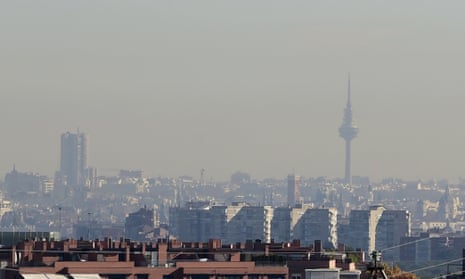Residents of Madrid became the latest to have their daily lives disrupted by the failure to control air pollution. New emergency laws were enacted for the first time in mid-November following a finding by the EU commission that the city’s air quality plans were insufficient. Nitrogen dioxide reached almost double the World Health Organisation guidelines in central residential areas during still weather on 12 and 13 November. Urban motorway speeds were reduced from 80-90kph to 70kph (44mph) and city centre parking was restricted to residents.
The cap of polluted air that settles over Madrid is nicknamed la boina (the beret) but the city is not alone in having air pollution problems. Nitrogen dioxide limits were set in 1999 to be met by 2010 but the failure to clean diesel exhausts in real-world driving means that cities throughout Europe have yet to reach compliance.
Madrid’s emergency plans also include increased (and free) public transport. Although this means more buses, Scandinavian and London tests show that modern buses can emit less nitrogen oxides than diesel cars. This is especially the case when buses are full. At these times bus engines work harder but the hotter exhaust provides more energy for chemical reactions to scrub pollution. These Scandinavian tests also show that diesel cars driven in cold weather (-7c) produce around three times more nitrogen oxides than they do in summer temperatures (23c). This will make it even harder for northern European cities to control their wintertime smog without restricting diesel cars.

Comments (…)
Sign in or create your Guardian account to join the discussion